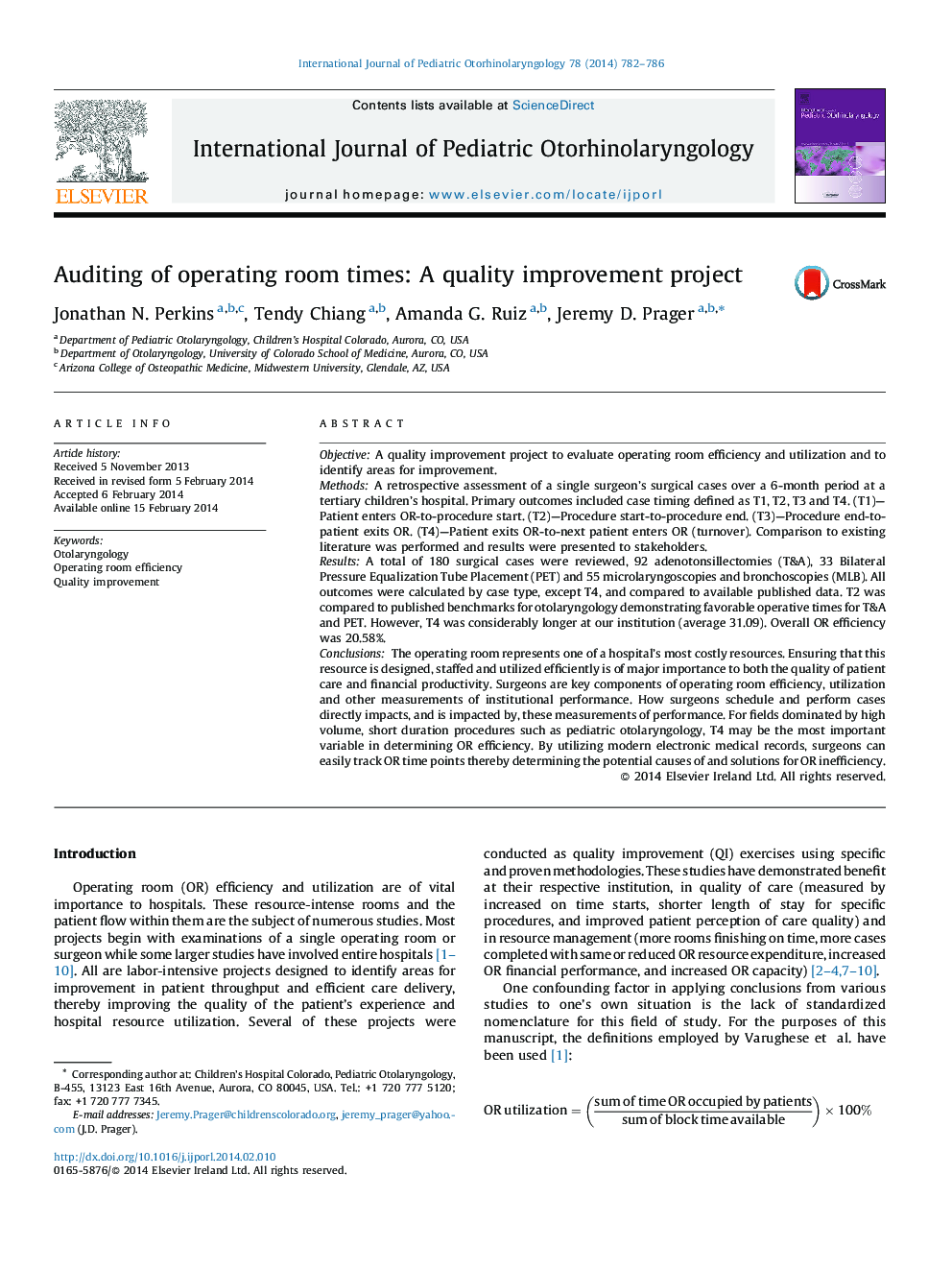| Article ID | Journal | Published Year | Pages | File Type |
|---|---|---|---|---|
| 4112001 | International Journal of Pediatric Otorhinolaryngology | 2014 | 5 Pages |
ObjectiveA quality improvement project to evaluate operating room efficiency and utilization and to identify areas for improvement.MethodsA retrospective assessment of a single surgeon's surgical cases over a 6-month period at a tertiary children's hospital. Primary outcomes included case timing defined as T1, T2, T3 and T4. (T1)—Patient enters OR-to-procedure start. (T2)—Procedure start-to-procedure end. (T3)—Procedure end-to-patient exits OR. (T4)—Patient exits OR-to-next patient enters OR (turnover). Comparison to existing literature was performed and results were presented to stakeholders.ResultsA total of 180 surgical cases were reviewed, 92 adenotonsillectomies (T&A), 33 Bilateral Pressure Equalization Tube Placement (PET) and 55 microlaryngoscopies and bronchoscopies (MLB). All outcomes were calculated by case type, except T4, and compared to available published data. T2 was compared to published benchmarks for otolaryngology demonstrating favorable operative times for T&A and PET. However, T4 was considerably longer at our institution (average 31.09). Overall OR efficiency was 20.58%.ConclusionsThe operating room represents one of a hospital's most costly resources. Ensuring that this resource is designed, staffed and utilized efficiently is of major importance to both the quality of patient care and financial productivity. Surgeons are key components of operating room efficiency, utilization and other measurements of institutional performance. How surgeons schedule and perform cases directly impacts, and is impacted by, these measurements of performance. For fields dominated by high volume, short duration procedures such as pediatric otolaryngology, T4 may be the most important variable in determining OR efficiency. By utilizing modern electronic medical records, surgeons can easily track OR time points thereby determining the potential causes of and solutions for OR inefficiency.
